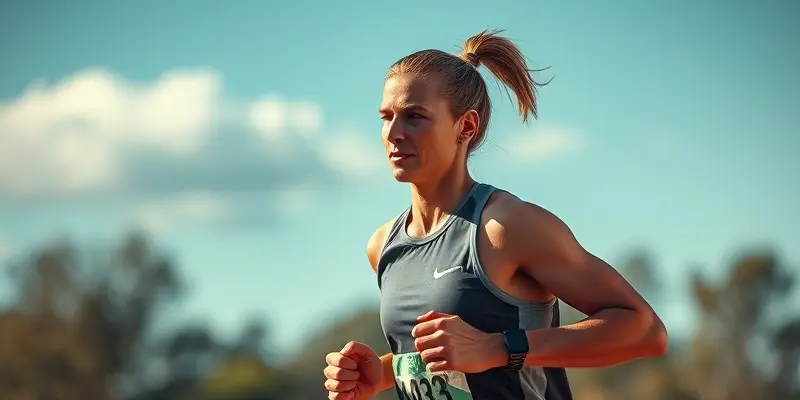Recovery & Injury: What Larry Bird’s Story Can Teach Every Athlete
In the world of sports, injuries are more than setbacks—they’re turning points. Whether you’re a weekend gym-goer or an aspiring pro, how you recover can define your journey. NBA legend Larry Bird’s relentless pursuit of greatness—despite chronic back pain—offers crucial lessons in injury, recovery, and the power of listening to your body. Let’s uncover the science, tools, and mindset that can help you bounce back stronger.
Lessons From Larry Bird: Perseverance, Pain, and Payoff
Larry Bird, an icon who defined basketball in the 1980s, wasn’t just celebrated for his skill—he was known for relentless hustle and grit. But behind the highlights, Bird waged a quiet battle against chronic back problems, which began in 1985 while building his mother’s driveway by hand. What started as a noble gesture led to years of pain, intensive therapy, and ultimately, an early end to his career.
What’s the takeaway? Bird’s refusal to rest, even when severely injured, offers both inspiration and caution. His own words ring true: “Every time I would play, I was wondering if I was going to be in a wheelchair.” Playing through pain may win admiration, but it risks permanent damage—sometimes, the toughest athletes are those who know when to pause.
Short-Term Grit vs. Long-Term Health
Bird’s career stats—like averaging 20.2 points and 9.6 rebounds during his final season—show that excellence is possible with injury. Yet those years also highlight the hidden cost: chronic pain, missed games, and a forced retirement. For everyone from beginners to competitive athletes, Bird’s story is a reminder that there’s no substitute for smart recovery.
Principles of Injury Prevention & Recovery
Your body is your most valuable teammate. Taking care of it isn’t just about healing after injuries—it’s about minimizing risks from day one.
Listen to Your Body
Don’t ignore persistent aches or fatigue. Pain is your body’s warning light. Seeking help early can prevent minor issues from becoming major roadblocks.
Professional Support: Why Physical Therapy Matters
A good physical therapist can guide recovery, correcting movement patterns and building strength. For Bird, therapy meant regular spinal manipulation, stationary biking, and customized mobility routines. For you, it means getting a tailored plan that supports safe, progressive healing.
Gradual Return: The Power of Patience
Bird relied on stationary biking and non-impact exercises before returning to the court. The lesson? Gradually increase intensity—start with gentle movement, stretching, and low-resistance activities before resuming full workouts.
Practical Recovery Toolkit: Gadgets, Exercises, and Nutrition
Let’s turn knowledge into action. What tools and routines actually help?
Beginner-Friendly Recovery Tools
- Foam rollers & massage guns: For loosening tight muscles and releasing tension.
- Stationary bikes & ellipticals: Keep you active without overloading joints or the spine.
- Braces and compression gear: Provide stability during rehab phases.
Safe Recovery Routines
- Focus on core strength and stabilizer muscles—these protect your back and joints on and off the court.
- Incorporate mobility drills and gentle dynamic stretching.
- Avoid exercises that aggravate pain; substitute with non-impact movements until strength and flexibility return.
Fuel Your Healing: Nutrition Tips
- Protein-rich foods (eggs, fish, lean meats) repair muscle microtears.
- Colorful fruits, veggies, and omega-3s fight inflammation.
- Hydration and micronutrients (zinc, vitamin C, magnesium) support tissue repair.
Staying Motivated Through Rehab
Injury rehab tests not just your body, but your mindset. Bird’s dedication, even on hard days, underscores the importance of setting incremental goals and focusing on progress, not perfection.
Mindset Makes the Difference
- Track small wins—each pain-free session or increased range of motion counts.
- Use visualization and positive self-talk. Imagine yourself moving freely again.
- Accept setbacks as part of the journey, not a reason to give up.
Staying disciplined in rehab isn’t about toughness. True champions invest in long-term health, not just quick returns.
Key Takeaways: Play the Long Game
Larry Bird’s legacy is more than his NBA titles; it’s his example for anyone facing adversity. Here’s what every athlete should remember:
- Smart recovery and injury prevention are non-negotiable for sustained performance.
- Tools and routines are vital, but so is your mindset—trust the process.
- Seek advice from health professionals, listen to your body, and make nutrition part of your healing strategy.
How do you approach recovery after setbacks? What’s helped you stay motivated through injury? Share your story in the comments—together, we grow stronger.
About the Author:
As the lead writer at GymPulse and a fitness professional with over a decade of experience, I combine science-based strategies with a passion for helping athletes thrive. My insights are drawn from real-world training, athlete case studies, and the latest in sports medicine—always aiming to keep you strong, healthy, and inspired.

